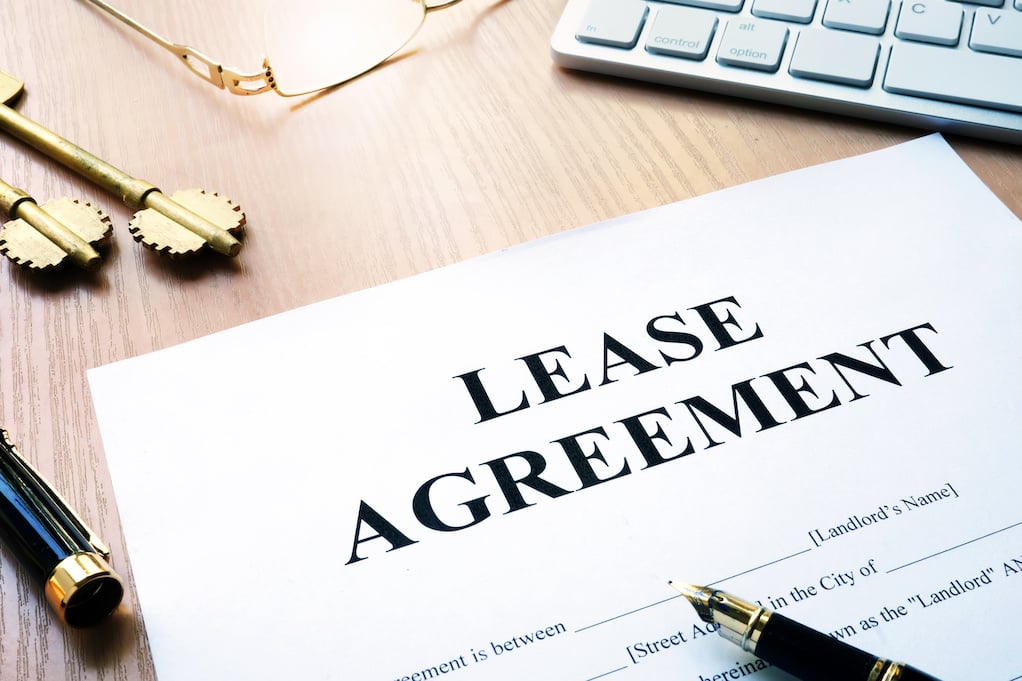While sale-leaseback transactions are a highly effective financial strategy, they are often misunderstood. The strategic maneuver can unlock a win-win scenario for the right tenant and investor. Unfortunately, since the interests in these deals are more niche in nature, they are less common. As a result, there are a lot of misconceptions that cloud the reality of the value a sale-leaseback transaction can provide.
So, let's separate fact from fiction and explore the truth behind sale-leasebacks, empowering you with the knowledge to make the most informed decisions possible in the realm of commercial real estate.
To stay updated with the latest insights and other critical strategies in the world of commercial real estate, don't miss out on our valuable resources. Subscribe to our blog and gain access to the most powerful tools and tricks to master the CRE landscape.
Myth: Tenants Maintain the Same Control
The sale-leaseback transaction can offer a powerful win-win situation for the right tenant and investor. However, the myth that tenants retain the same level of control isn't true and depends more on the specifics of the lease agreement.
As a tenant, you are essentially gaining a new landlord and the authority that comes with it. However, a well-structured lease can allow you to access capital in a sale-leaseback while maintaining the level of control you need to operate your businesses effectively.
You will be bound by the terms of the new lease, so the agreements should incorporate a robust framework of legal protections. These provisions serve to meticulously outline the rights and responsibilities of each party, thereby preserving a balance between the former property owner, now a tenant, and the new landlord, typically an investor. The legal safeguards embedded in these contracts should offer tenants a watertight layer of protection while also acknowledging the new landlord.

Most sale-leasebacks are triple net leases. And with this, tenants typically hold the authority to determine both the usage and upkeep of the property. This level of control empowers them to ensure that the property remains in ideal condition, aligning with their business objectives. Essentially, any vendor falls under the tenant's responsibility.
Property maintenance and repairs are also likely under the tenant's control, including groundskeeping, maintenance, office cleaning, etc.
|
“The seller or future tenant must figure out in advance its economic needs and preferences, including the term, rent level, and rent escalators that make sense for the business.” -GlobeSt |
A diligent assessment of tenant rights within the new lease is crucial in sale-leaseback transactions. By carefully negotiating and including specific rights and provisions in the lease, tenants can safeguard their control and ensure a smooth transition into the new landlord-tenant relationship.
And by committing to all the key terms and duration upfront, tenants can avoid potential issues or disagreements during the leasing process or years down the line.
|
“Knowing the tenant has thought about and committed to the term and all the key economic points in a lease upfront makes a big difference and prevents the derailing of the process later on when a group might realize they can only do a 15-year lease versus a 20-year one.” -GlobeSt |
Another crucial aspect that tenants must consider is the role of capital expenditures, or CapEx. The fundamental premise is that once the new landlord assumes ownership of the building, they are typically responsible for funding and executing capital improvements. This transfer of ownership theoretically relieves the tenant of the burden of managing and financing these capital projects.
However, it's important to note that the exact terms and responsibilities surrounding CapEx are not set in stone. Instead, they are a vital part of the negotiation process that takes place as part of the sale-leaseback agreement. The allocation of CapEx responsibilities can vary from one deal to another, and it is typically a subject of thorough negotiation between the tenant and the new landlord.
Myth: Sale-Leaseback is Only Good for Short-Term Gains
While they indeed provide an immediate influx of capital, it's a misconception to think they are solely beneficial for short-term gains. Tenants who engage in sale-leaseback transactions often secure long-term lease agreements, which come with a host of advantages.
By unlocking equity from their property, tenants can use the funds for various purposes like debt reduction, expansion, or investment in core business activities, ensuring that the benefits extend well into the future. Long-term leases offer stability, and the consistency of the lease terms ensures tenants can enjoy this stability for an extended period. Furthermore, such agreements provide tenants with a strong financial foundation, allowing them to invest in infrastructure upgrades, facility renovations, or finance growth and acquisitions.

With the potential fluctuations in interest rates and property devaluation, having existing debt on a property can be a source of anxiety. For instance, if the original debt carried a 3% interest rate, and refinancing would now demand an 8.5% interest rate, it could significantly impact a tenant's profit and loss statement.
However, when a lease is well-negotiated as part of a sale-leaseback arrangement, tenants gain the assurance of fixed rent payments, including pre-negotiated escalations, for the entire lease term. This means they are also shielded from the uncertainties of how the Federal Reserve's interest rate policies might affect their financial stability. Sale-leasebacks thus provide tenants with a financial strategy that not only enhances liquidity but also offers a degree of stability in an unpredictable economic climate.
This financial strategy is an excellent maneuver for all parties involved. The enduring lease agreements found in sale-leaseback transactions allow investors to enjoy a steady and sustained income stream from their acquired property.
This is particularly valuable in a landscape where traditional landlords may encounter significant challenges in finding and securing reliable, creditworthy tenants. In contrast, investors who partake in sale-leasebacks are presented with the opportunity to acquire a property that already includes an established, reliable tenant.
|
“Dollar volume of sale-leaseback deals rose 8.3% to $5.1 billion in the second quarter (of 2023) over the first." -GlobeSt |
Ultimately, these extended lease terms have a far-reaching impact. Tenants benefit from a longer period of stability, while investors gain assurance in their investment's income-generating potential. The reality of sale-leasebacks lies in the advantageous long-term prospects they offer to both former property owners and new landlords alike.
Myth: Sale-Leasebacks are Risky Signals of Distress
For many tenants, especially those that own their corporate real estate, a sale-leaseback represents a calculated financial maneuver. It's a means to transform the dormant equity within their real estate assets into liquid capital without relinquishing control over their operational space. By doing so, businesses can reinvest the capital into their core operations, expansion initiatives, or other promising ventures.
This strategic use of sale-leasebacks isn't limited to companies in distress; it's a choice made by both struggling and successful businesses. By securing a long-term lease in the same property they once owned, companies can ensure the stability of their occupancy while leveraging the financial benefits of the transaction. In this way, sale-leasebacks become a powerful tool for companies seeking to optimize their financial agility, maintain operational control, and navigate the path to sustained growth.
They aren't inherently risky; instead, they offer tenants a strategic avenue to bolster their financial position and achieve long-term stability.

Myth: Limited ROI for Investors With Sale-Leaseback
In a landscape fraught with economic volatility, investors can find security in the consistent and steady rental income provided by sale-leaseback arrangements. These transactions typically secure a long-term lease with the tenant, ensuring a stable and predictable income stream throughout the lease's duration.
Moreover, the potential for property appreciation over time remains a compelling factor for investors. This is especially attractive as all other speculative developments have grinded to a halt. As most other office investments are far too uncertain and risky, the inherent value of the property is preserved in a sale-leaseback.
Factors such as the property's location, prevailing market conditions, and the quality of the tenant can contribute to its appreciation potential. The commonality of sale-leasebacks also varies across regional markets.
|
“The South led in sale-leaseback activity by deal count, comprising 40% of all transactions. The Northeast led in dollar volume with $1.6 billion. In comparing dollar volume, the West closely followed the Northeast with $1.4 billion, then the South came in with $1.3 billion.” -GlobeSt |
The enduring value and income stream continue to make sale-leasebacks a lucrative and enticing investment for the right investor, providing a strategic financial move amidst the unpredictability in other commercial investment avenues. The dual advantage of a stable income source and potential property appreciation makes them a strategic choice, and they are climbing in popularity.
Takeaways for Tenants
Sale-leasebacks, while often misunderstood, are a powerful financial strategy that can offer enduring benefits to both tenants and investors. Separating myth from reality reveals that these transactions are not just about short-term gains or limited returns. Instead, they provide stability, predictability, and opportunities for long-term financial growth.
With the commercial real estate landscape evolving, sale-leasebacks can emerge as a strategic choice for those who seek to unlock financial potential while maintaining control and stability. And as always, working with a True Tenant Rep™ is the key to assuring that things go your way.
Stay ahead in the world of commercial real estate by subscribing to our blog, where you can access the most potent tools and insights to make informed decisions in this dynamic field. Subscribe today and empower your CRE journey.








